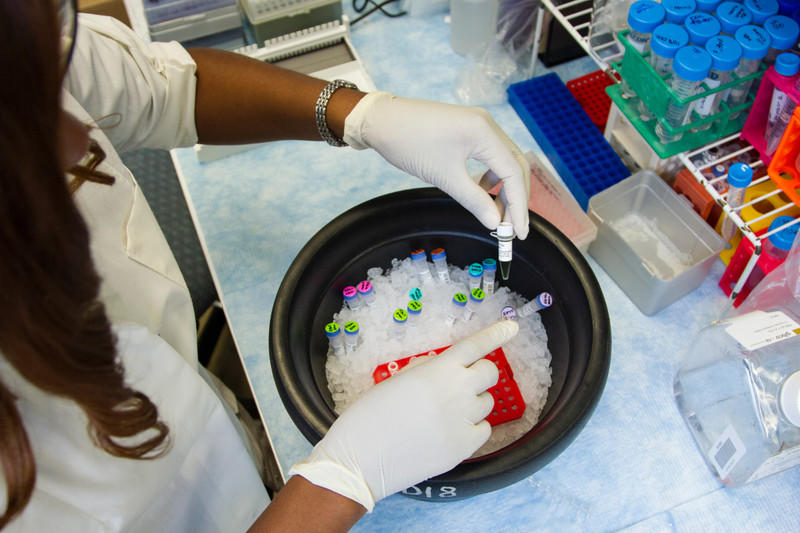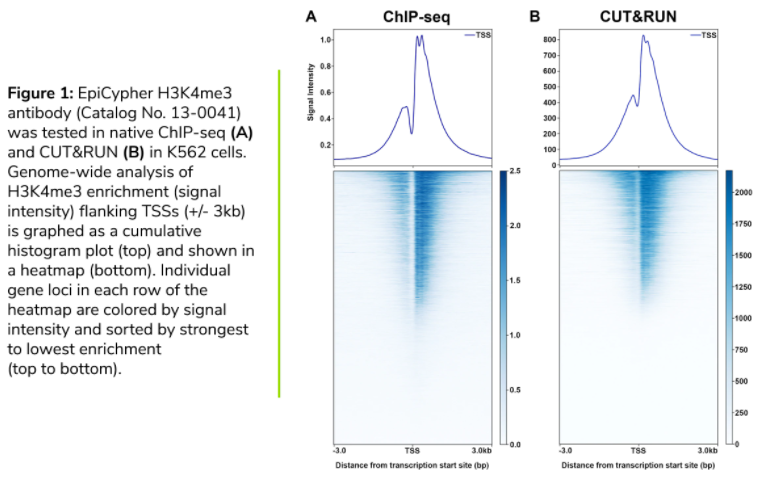References
1. Meers MP, et al. Improved CUT&RUN chromatin profiling tools. Elife, 2019. 8: p. (PubMed PMID: 31232687) (PMC6598765)
2. Skene PJ, et al. Targeted in situ genome-wide profiling with high efficiency for low cell numbers. Nat Protoc, 2018. 13(5): p. 1006-19.(PubMed PMID: 29651053)
3. Skene PJ, Henikoff S. An efficient targeted nuclease strategy for high-resolution mapping of DNA binding sites. Elife, 2017. 6: p. (PubMed PMID: 28079019) (PMC5310842)
4. Hainer SJ, et al. Profiling of Pluripotency Factors in Single Cells and Early Embryos. Cell, 2019. 177(5): p. 1319-29 e11. (PubMed PMID: 30955888) (PMC6525046)
5. Rao RC, Dou Y. Hijacked in cancer: the KMT2 (MLL) family of methyltransferases. Nat Rev Cancer, 2015. 15(6): p. 334-46. (PubMed PMID: 25998713) (PMC4493861)
6. He C, et al. High expression of trimethylated histone H3 lysine 4 is associated with poor prognosis in hepatocellular carcinoma. Hum Pathol, 2012. 43(9): p. 1425-35. (PubMed PMID: 22406368)
7. Chen X, et al. A novel subtype classification and risk of breast cancer by histone modification profiling. Breast Cancer Res Treat, 2016. 157(2): p. 267-79. (PubMed PMID: 27178334)
8. Xi Y, et al. Histone modification profiling in breast cancer cell lines highlights commonalities and differences among subtypes. BMC Genomics, 2018. 19(1): p. 150. (PubMed PMID: 29458327) (PMC5819162)
9. Benard A, et al. Histone trimethylation at H3K4, H3K9 and H4K20 correlates with patient survival and tumor recurrence in early-stage colon cancer. BMC Cancer, 2014. 14: p. 531. (PubMed PMID: 25047223) (PMC4223547)
10. Winters AC, Bernt KM. MLL-Rearranged Leukemias-An Update on Science and Clinical Approaches. Front Pediatr, 2017. 5: p. 4. (PubMed PMID: 28232907) (PMC5299633)
11. Tkachuk DC, et al. Involvement of a homolog of Drosophila trithorax by 11q23 chromosomal translocations in acute leukemias. Cell, 1992. 71(4): p. 691-700. (PubMed PMID: 1423624)
12. Gu Y, et al. The t(4;11) chromosome translocation of human acute leukemias fuses the ALL-1 gene, related to Drosophila trithorax, to the AF-4 gene. Cell, 1992. 71(4): p. 701-8. (PubMed PMID: 1423625)
13. Vashishtha M, et al. Targeting H3K4 trimethylation in Huntington disease. Proc Natl Acad Sci U S A, 2013. 110(32): p. E3027-36. (PubMed PMID: 23872847)(PMC3740882)
14. Berson A, et al. Epigenetic Regulation in Neurodegenerative Diseases. Trends Neurosci, 2018. 41(9): p. 587-98. (PubMed PMID: 29885742) (PMC6174532)
15. Shah RN, et al. Examining the Roles of H3K4 Methylation States with Systematically Characterized Antibodies. Mol Cell, 2018. 72(1): p. 162-77 e7. (PubMed PMID: 30244833) (PMC6173622)
16. Grzybowski AT, et al. Calibrating ChIP-Seq with Nucleosomal Internal Standards to Measure Histone Modification Density Genome Wide. Mol Cell, 2015. 58(5): p. 886-99. (PubMed PMID: 26004229) (PMC4458216)



